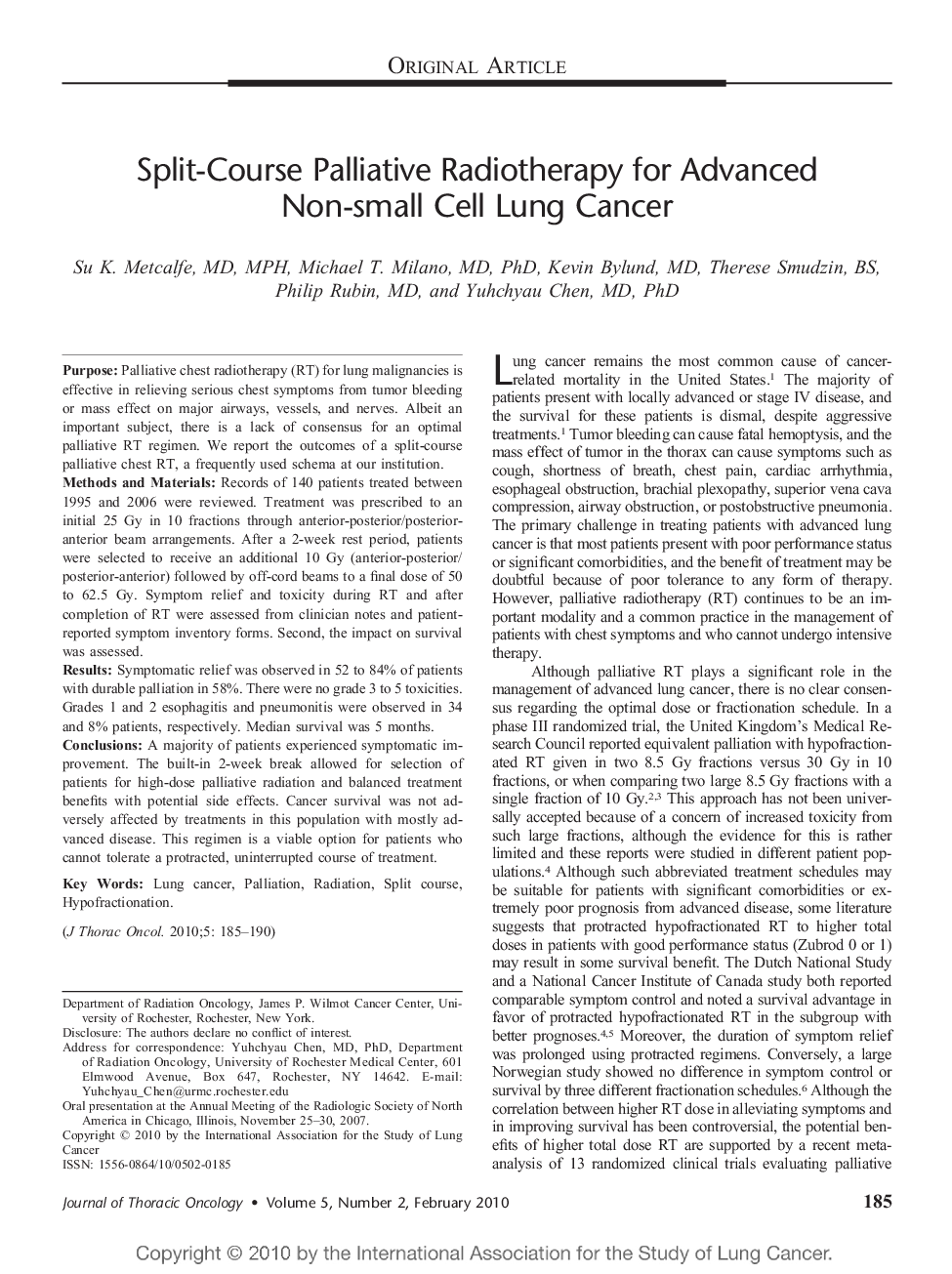| Article ID | Journal | Published Year | Pages | File Type |
|---|---|---|---|---|
| 3991046 | Journal of Thoracic Oncology | 2010 | 6 Pages |
PurposePalliative chest radiotherapy (RT) for lung malignancies is effective in relieving serious chest symptoms from tumor bleeding or mass effect on major airways, vessels, and nerves. Albeit an important subject, there is a lack of consensus for an optimal palliative RT regimen. We report the outcomes of a split-course palliative chest RT, a frequently used schema at our institution.Methods and MaterialsRecords of 140 patients treated between 1995 and 2006 were reviewed. Treatment was prescribed to an initial 25 Gy in 10 fractions through anterior-posterior/posterior-anterior beam arrangements. After a 2-week rest period, patients were selected to receive an additional 10 Gy (anterior-posterior/posterior-anterior) followed by off-cord beams to a final dose of 50 to 62.5 Gy. Symptom relief and toxicity during RT and after completion of RT were assessed from clinician notes and patient-reported symptom inventory forms. Second, the impact on survival was assessed.ResultsSymptomatic relief was observed in 52 to 84% of patients with durable palliation in 58%. There were no grade 3 to 5 toxicities. Grades 1 and 2 esophagitis and pneumonitis were observed in 34 and 8% patients, respectively. Median survival was 5 months.ConclusionsA majority of patients experienced symptomatic improvement. The built-in 2-week break allowed for selection of patients for high-dose palliative radiation and balanced treatment benefits with potential side effects. Cancer survival was not adversely affected by treatments in this population with mostly advanced disease. This regimen is a viable option for patients who cannot tolerate a protracted, uninterrupted course of treatment.
